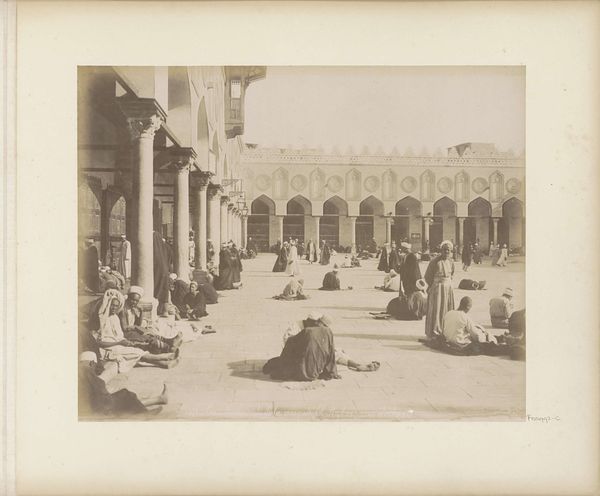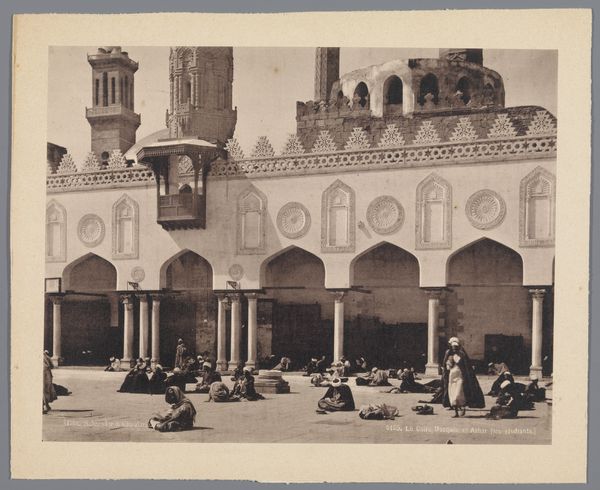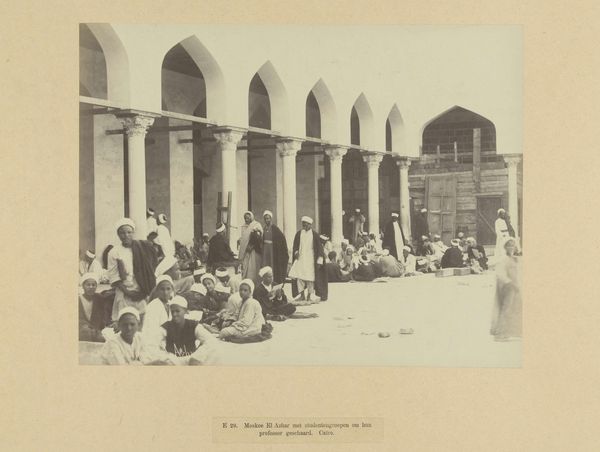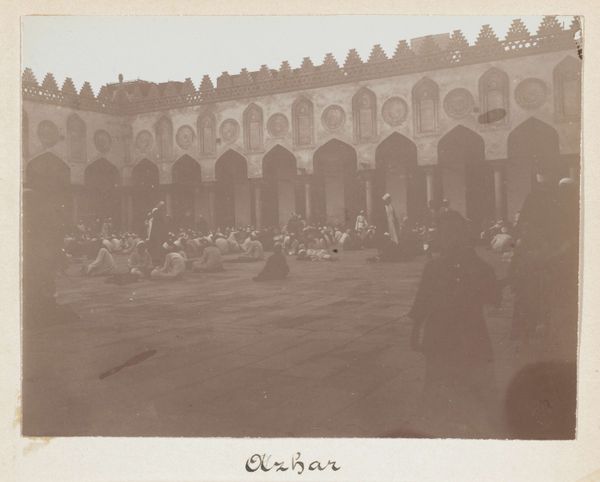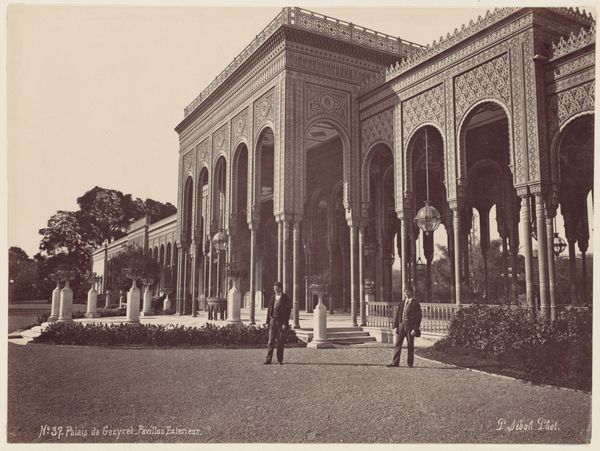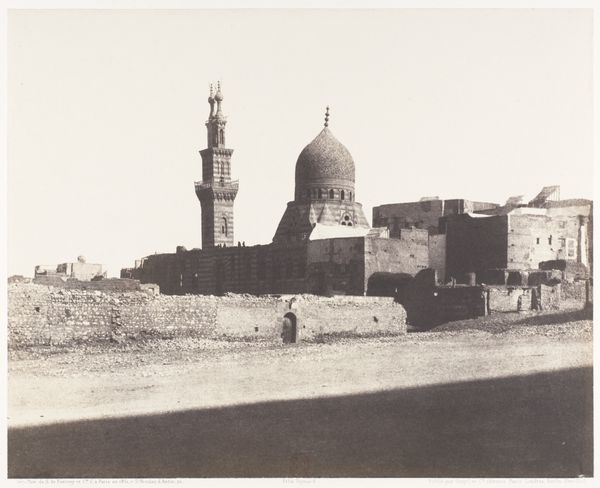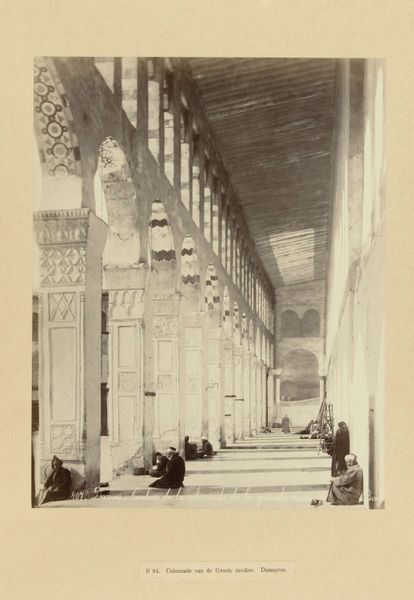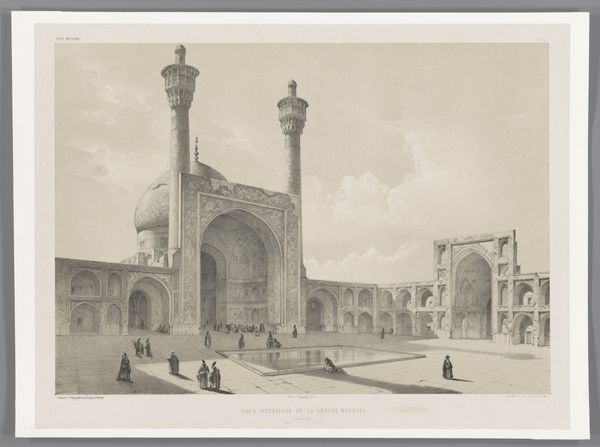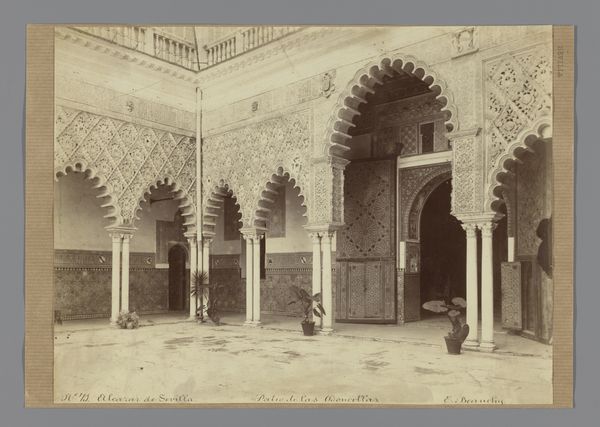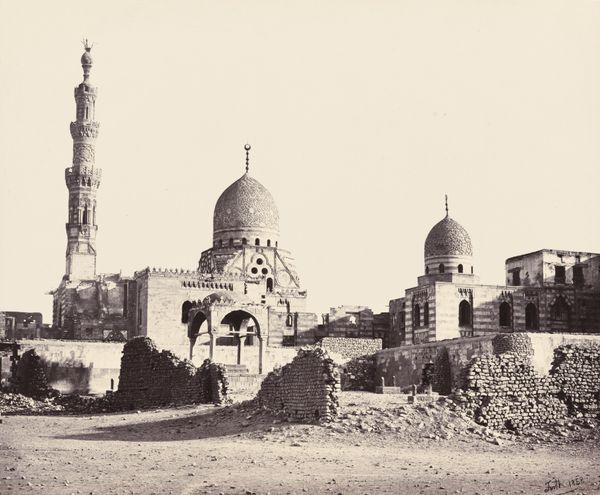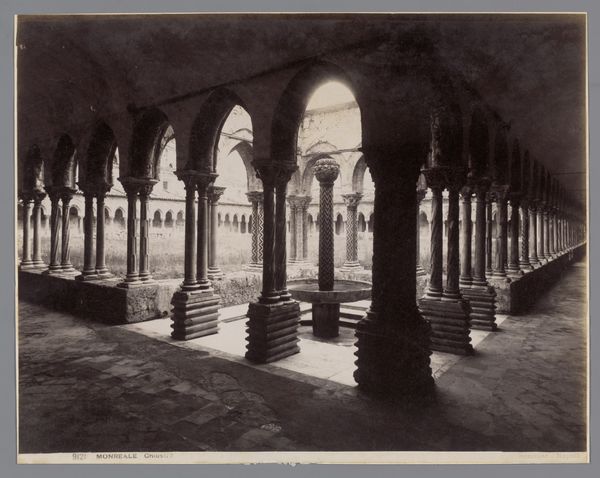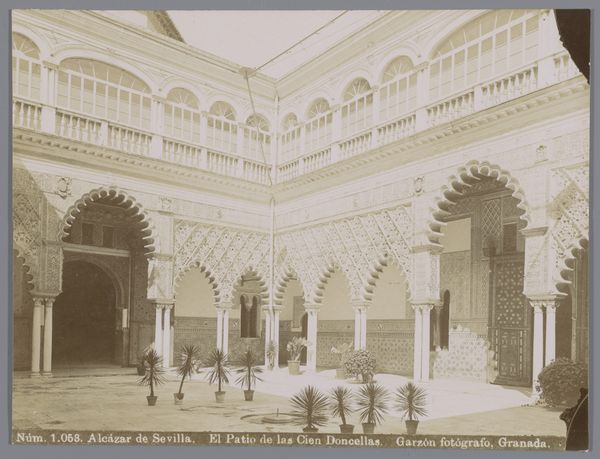
albumen-print, photography, albumen-print
#
albumen-print
#
landscape
#
street-photography
#
photography
#
historical photography
#
street photography
#
islamic-art
#
albumen-print
Dimensions: 8 5/8 x 11 1/16 in. (21.91 x 28.1 cm) (image)10 7/8 x 13 7/8 in. (27.62 x 35.24 cm) (mount)
Copyright: Public Domain
Editor: Here we have Félix Bonfils's albumen print, "Le Caire," created around the 19th century. I find the sheer number of figures intriguing; their activities suggest a bustling center of religious or intellectual life. What can you tell me about this work? Curator: This image offers a crucial glimpse into the orientalist gaze and its impact on representing the Middle East. Bonfils, a Western photographer, captures a scene that reinforces certain narratives about the region, particularly concerning Islamic culture and education. How does this perspective influence your reading of the photograph? Editor: Well, knowing it's an "outsider" perspective, I can see how the focus might be on capturing an "exotic" scene for a Western audience. It does make me question how accurately it portrays daily life, and whose voices are missing. Curator: Precisely. Consider how the architectural elements—the arches, the courtyard—frame the subjects. Do they feel like active participants, or are they simply part of the exotic landscape Bonfils is documenting? This staging raises questions about power dynamics, particularly the photographer's control over how the scene is presented and consumed. We have to reflect on how photographs like this circulated, shaping public opinion and perhaps reinforcing colonial ideologies. Editor: I hadn't thought about it that way, seeing it more as a document, but it is definitely a constructed image presenting a very specific viewpoint of 19th century Cairo. It highlights the need to interrogate visual representation and question the narratives they construct. Curator: Absolutely. Engaging with historical images like "Le Caire" means acknowledging the complex interplay of culture, representation, and power. It calls on us to actively deconstruct and reimagine the narratives being presented. Editor: I will definitely approach historical photography with a new level of scrutiny going forward. Thanks for making me rethink what I see in the photograph.
Comments
No comments
Be the first to comment and join the conversation on the ultimate creative platform.
